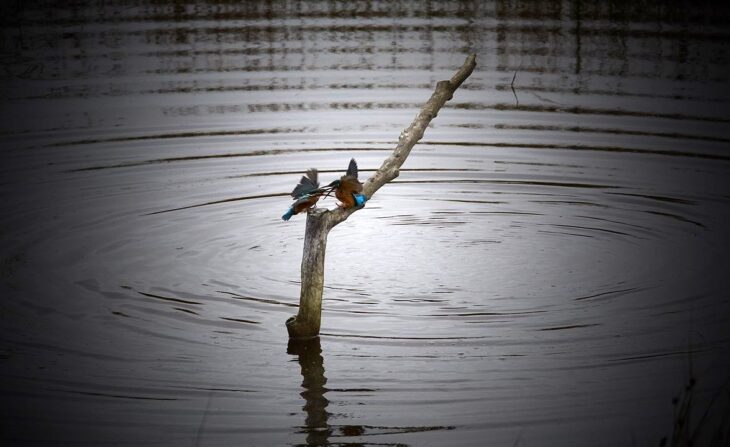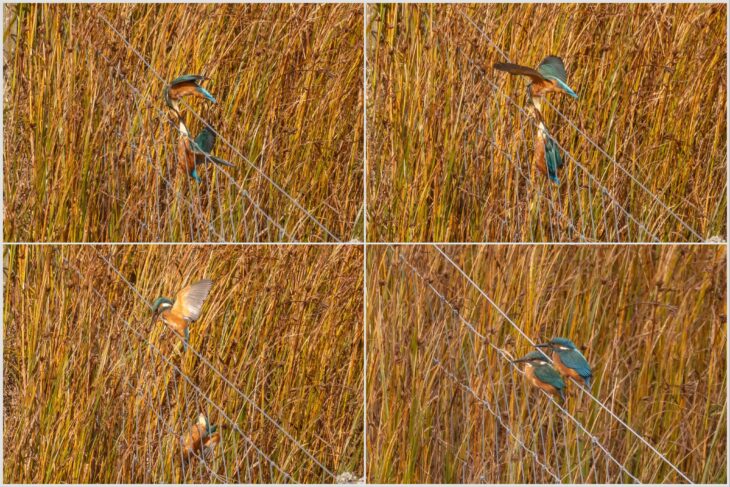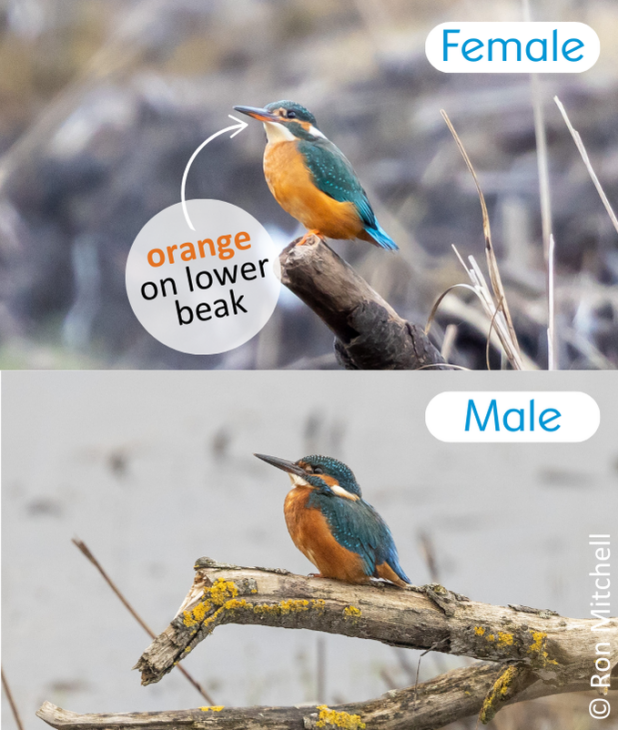Kingfisher Fights & FAQ
We’re incredibly lucky at Montrose Basin to be able to see kingfishers on a daily basis outside of their breeding season. A healthy population of kingfishers breed up the River South Esk, and then venture off to find nearby wintering territories from late July onwards.
In fact, we’ve seen a kingfisher from the visitor centre windows 28 out of 30 days this past month! So when people visit us at this time of year, not only are we able to say they might see a kingfisher, we can say that’s it’s actually pretty likely that they will.
This puts us in the incredibly fortunate position of being able to watch all their different behaviours and routines through our telescopes: fishing, preening, bathing, hovering, and even escaping sparrowhawks. Last month we got to see a kingfisher behaviour that’s rarely been seen or recorded: a territorial dispute!
Outside of breeding season, kingfishers are incredibly territorial, and will claim their own feeding patch that they will typically use over the whole of the Autumn and Winter. Right after breeding season, these haven’t been fully claimed yet, and individual kingfishers may need to fight to ‘win’ their territory. We were amazed to see this behaviour last month on 3rd September.
The dispute lasted from when the visitor centre opened (10:30am) until about 10 minutes before we closed for the day (5pm). During this time, the two kingfishers would share perches, tensely sidle up to one another, and then suddenly unleash an attack, beaks interlocked in battle. It often looked like the aim was to drown the opponent. We didn’t see either kingfisher catch a fish for the whole day, as whenever one would lower its guard, the other would use it as an opportunity to start fighting again. For a bird that needs to eat its own body weight in fish per day, this is a real test of endurance.

At one point, a third kingfisher appeared (another juvenile). It stayed away from the fighting pair and ended up just being a spectator, before flying off. This suggests a brood of kingfishers must have recently fledged, and multiple young ones were patrolling the Basin to find somewhere to claim as their own.

Right before the centre closed for the day (by which time the volunteers and staff were feeling pretty exhausted as well!), the adult kingfisher finally ‘won’ after one last fight, and the juvenile flew off in defeat.
Now that this territorial dispute is over, it’s unlikely we’ll see this behaviour again, at least until next year, but we have been seeing the adult male kingfisher almost every day since.
We’re open every day, 10:30am-5pm, until 1st November when we’re open Fri, Sat, Sun, Mon, 10:30am-4pm. Autumn and Winter is the best time of year to spot a kingfisher!
Kingfisher FAQ
When is the best time of year to see a kingfisher?
Kingfishers don’t migrate, but at Montrose Basin we see them much more reliably outside of breeding season. We can see them daily outside of breeding season, but then when Spring rolls around they become much more elusive and pair up to nest in riverbanks. Breeding season is usually from mid-March to early August, but varies slightly from year to year.
Is there a best time of day to see a kingfisher?
Not that we’ve noticed! We’ve seen kingfishers from the centre fishing at dawn when we’ve been up before sunrise to count the pink-footed geese, and in the middle of the day, and then late into the evenings too.

How do you tell kingfishers apart?
Both the male and the female kingfisher are very colourful, with incredibly bright blue feathers, and soft orange fronts. The males may be a bit brighter, but we find that it’s hard to tell them apart by vividness alone. Males have all-black beaks, while females have an orange lower half to their beak.
Juvenile kingfishers look less blue, and a little more turquoise. Their orange fronts can sometimes look a bit ‘smoky’, and their little feet look darker and less red. If they’re very recent fledglings, you may even be able to see a small white tip to their beaks, which is thought to help the adults see where to point the fish that they’re offering to their chicks.
Do you ever see multiple kingfishers at once?
If you see more than one kingfisher at a time, that can mean a few things:
- It’s breeding season, and you’re seeing a kingfisher pair.
- It’s breeding season, and you’re seeing a kingfisher family!
- It’s not breeding season, and some kingfishers are having a dispute over their wintering feeding territory.
Outside of breeding season, kingfishers are quite solitary birds.
Joanna Peaker
Montrose Basin Visitor Centre Site Manager
Help protect Scotland’s wildlife
Our work to save Scotland’s wildlife is made possible thanks to the generosity of our members and supporters.
Join today from just £4 a month to help protect the species you love.
Preface
We’re incredibly lucky at Montrose Basin to be able to see kingfishers on a daily basis outside of their breeding season. A healthy population of kingfishers breed up the River …
